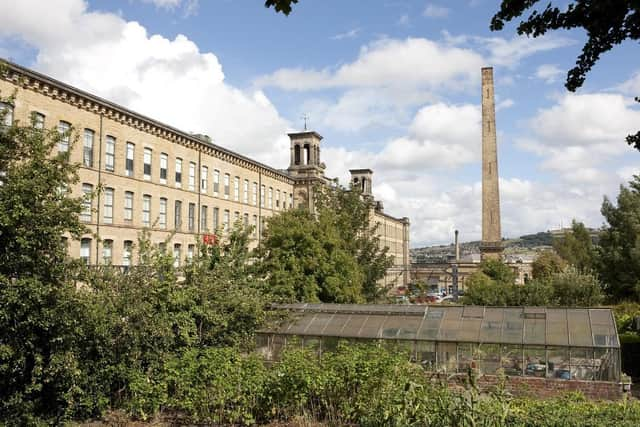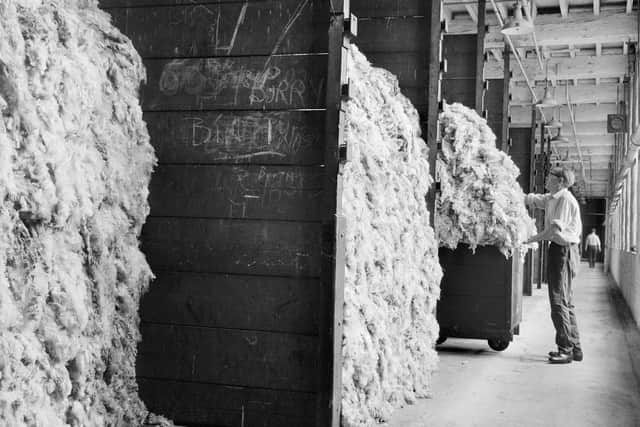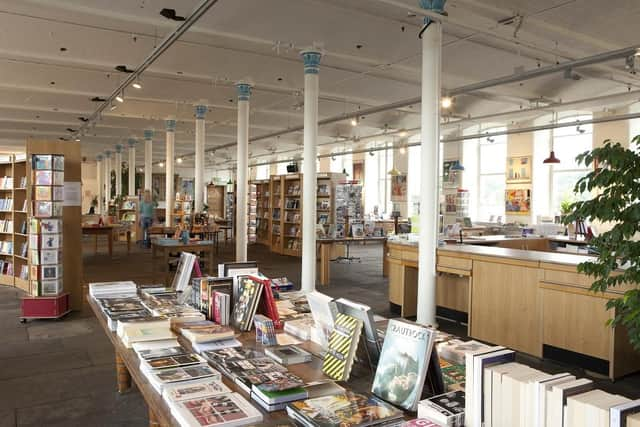Saltaire: History of Yorkshire's 19th century village built by Sir Titus Salt where BBC series Gentleman Jack was filmed and the importance of preserving the history of Salts Mill
Saltaire is a Victorian model village near Shipley, located between the River Aire, the railway and the Leeds and Liverpool Canal.
Salts Mill and the houses were built by industrialist Sir Titus Salt to allow his workers to live in improved conditions than the areas of Bradford at the time.
Advertisement
Hide AdAdvertisement
Hide AdThe village became a UNESCO World Heritage Site in 2001 and has since been added on the European Route of Industrial Heritage.


The mill was in operation for 133 years producing textiles before it was transformed into a multipurpose business with an art gallery, restaurants, shops selling a variety of products including flowers, books, food and includes the headquarters of a technology company.
Salts Mill has been used to film scenes of Gentleman Jack series two; part of the building was transformed into a set emulating a Victorian street.
The preservation of Salts Mill is crucial to the business and heritage of the village.
Advertisement
Hide AdAdvertisement
Hide AdDirector of Salts Mill, Zoe Silver, told The Yorkshire Post: “The sense of the past is so prevalent at Salts - shaped by the human hand, sculpted by over 170 years of industrious folk and equally industrious Yorkshire weather.


“But it is the energy of now and next that really hits you here. This energy is fuelled by the combination of culture and commerce.
“Salts is buzzing with art, design, retail and manufacturing: by finding new uses for these breath-taking buildings with our mix of activities, we both preserve the history and experience the here and now.
“Some people come to Salts for a day out; others for a day on the production line or in the office. It is a symbiotic existence.”
History of Saltaire and Salts Mill


Advertisement
Hide AdAdvertisement
Hide AdIn 1851, Sir Titus Salt moved his five mills from Bradford to a site near Shipley, which became the present-day Saltaire, for the purpose of improving working conditions. The name is derived from his surname and the name of the river.
He employed local architects Francis Lockwood and William Mawson, who designed some of Bradford’s most notable buildings such as St George’s Hall, the Venetian Gothic Wool Exchange and the Continental Gothic Revival City Hall. Together the two designed Salts Mill which became the focal point of the village of Saltaire.
Titus built well-kept stone houses for his workers that were vast improvements from squalid and overcrowded areas in Bradford. Wash-houses with tap houses, bath-houses, a hospital and institute for recreation and education were added to the village along with a library, reading room, a concert hall, billiard room, science laboratory and a gymnasium.


A school for the children of the workers was built along with allotments, a park and a boathouse. There were recreational facilities implemented as part of the education such as a drum and fife band for school age boys and a brass band for men of the village, now known as Hammonds Saltaire Band.
Advertisement
Hide AdAdvertisement
Hide AdWith the improvement of housing, employment, recreation, educational facilities and social life, the model village symbolised a landmark example of well planned urban development.
At the time of its conception, Saltaire had 800 residences, 755 houses and 45 almshouses, that housed 4,389 people.
Saltaire village was under the ownership of the mill until it was sold by Messrs Salts Ltd to the Bradford Property Trust Ltd in July 1933.
The construction of the Grade II listed building Salts Mill was completed in 1853 and was the largest industrial building in the world. It introduced cloth manufacturing operations to the area and continued to produce cloth until 1986.
Advertisement
Hide AdAdvertisement
Hide AdIt was bought by young businessman Jonathan Silver who gave the building a new lease of life by opening the 1853 Gallery, showing work by his friend David Hockney, who is a painter, printmaker, stage designer and photographer from Bradford.
The mill began to fill up with art, books, culture and flowers and became a popular place for modern technology businesses to rent office premises and manufacturing space.
Saltaire village was under the ownership of the mill until it was sold by Messrs Salts Ltd to the Bradford Property Trust Ltd in July 1933.
Comment Guidelines
National World encourages reader discussion on our stories. User feedback, insights and back-and-forth exchanges add a rich layer of context to reporting. Please review our Community Guidelines before commenting.
